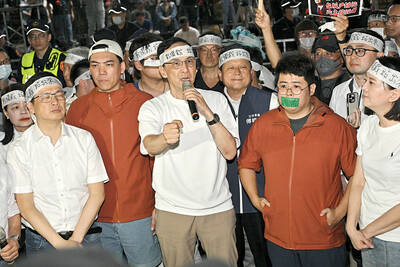Seventeen years have passed since Terry Tempest Williams gave us Refuge, an indelible meditation on her mother’s battle with cancer and the devastation wrought on a bird sanctuary by rising waters in the Great Salt Lake.
Since then, fans of this Utah native and naturalist have come to expect a common thread through her books: the artful weaving of observations from the natural world with the labyrinths of the human experience.
For Williams, this is not a stock formula. It’s her sublime art.
Now she delivers Finding Beauty in a Broken World, an ambitious, even audacious, work.
Williams takes us from the breathtaking, Byzantine mosaics of Ravenna, Italy — a city she has spent time in — and uses them as a metaphor for two communities, a besieged prairie dog colony in Utah and a village in Rwanda, where she helped build a memorial to victims of a 1994 genocide that killed 1 million in that African country.
That’s quite a juxtaposition, all delivered against the not-so-tacit backdrop of the Iraq war and the Bush administration’s foreign-policy adventures.
Although Williams made her reputation as a naturalist and defender of the West’s wild places, in recent years she has turned her eye toward the broader world.
Still, in her view, genocide in Rwanda can be equated to the war waged against the prairie dog, and vice versa. It is all about humanity’s inability to recognize, at least in a sustained and universal way, the worth of communities.
The Utah prairie dog is one of six species in the world viewed as most likely to become extinct in the 21st century. Of course, this assessment was made in 1999, before global warming and its impact on polar bears was fully appreciated.
Prairie dogs have long endured “varmint” status in the West. Ranchers despise them because cattle and horses have a way of stumbling into their holes, breaking legs. Beyond that, they were viewed as vermin that spread vermin.
Now they are threatened just as much by the tract homes sprouting in the New West. So these creatures, pack animals who communicate in distinct dialects, are torched and gassed in their holes.
“We are all complicit,” Williams writes. “A rising population is settling in subdivisions. The land scraped bare. The prairie dog towns and villages are being displaced. Sad, sorry state of habitation. They are prisoners on their own reservations.”
The Rwandan village Williams visits is Rugerero. Today it is home to massacre survivors from three villages that were erased from the Earth. The violence was tribal, Hutu killing Tutsi. Much of the butchering was done with machetes. As one aid volunteer informs Williams: “That’s Rwanda.”
So much savagery amid such beauty. Here is Williams limning the Rwandan landscape: “We arrive in Gisenyi at dusk. Smoke. Shadows. Figures captured in headlights. Lake Kivu is a long reflective mirror. I am reminded of scenes captured in a ring I once had as a child; inside a plastic orb were the silhouettes of palms against a twilight sky made of iridescent butterfly wings, turquoise blue. We are surrounded by enormous mountains, a crown of peaks, snow-tipped and jagged. And then, suddenly, an eerie red glow is emanating from the Congo. An active volcano.”
We live among such a disconnect in this world: apart from nature, apart from each other. It’s a comfort to have Williams in our midst, reminding us of the mosaic formed by every creature on Earth.
But that comfort is also our challenge.
“Shards of glass can cut and wound or magnify a vision,” Williams tells us. “Mosaic celebrates brokenness and the beauty of being brought together.”

In the March 9 edition of the Taipei Times a piece by Ninon Godefroy ran with the headine “The quiet, gentle rhythm of Taiwan.” It started with the line “Taiwan is a small, humble place. There is no Eiffel Tower, no pyramids — no singular attraction that draws the world’s attention.” I laughed out loud at that. This was out of no disrespect for the author or the piece, which made some interesting analogies and good points about how both Din Tai Fung’s and Taiwan Semiconductor Manufacturing Co’s (TSMC, 台積電) meticulous attention to detail and quality are not quite up to

April 21 to April 27 Hsieh Er’s (謝娥) political fortunes were rising fast after she got out of jail and joined the Chinese Nationalist Party (KMT) in December 1945. Not only did she hold key positions in various committees, she was elected the only woman on the Taipei City Council and headed to Nanjing in 1946 as the sole Taiwanese female representative to the National Constituent Assembly. With the support of first lady Soong May-ling (宋美齡), she started the Taipei Women’s Association and Taiwan Provincial Women’s Association, where she

Chinese Nationalist Party (KMT) Chairman Eric Chu (朱立倫) hatched a bold plan to charge forward and seize the initiative when he held a protest in front of the Taipei City Prosecutors’ Office. Though risky, because illegal, its success would help tackle at least six problems facing both himself and the KMT. What he did not see coming was Taipei Mayor Chiang Wan-an (將萬安) tripping him up out of the gate. In spite of Chu being the most consequential and successful KMT chairman since the early 2010s — arguably saving the party from financial ruin and restoring its electoral viability —

It is one of the more remarkable facts of Taiwan history that it was never occupied or claimed by any of the numerous kingdoms of southern China — Han or otherwise — that lay just across the water from it. None of their brilliant ministers ever discovered that Taiwan was a “core interest” of the state whose annexation was “inevitable.” As Paul Kua notes in an excellent monograph laying out how the Portuguese gave Taiwan the name “Formosa,” the first Europeans to express an interest in occupying Taiwan were the Spanish. Tonio Andrade in his seminal work, How Taiwan Became Chinese,